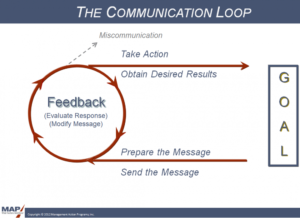Demand Disagreement
Ever worked in a place in which there was too much agreement going on? You probably noticed that this kind of “yesman” culture fostered poor decision-making and missed opportunities. Healthy work cultures demand disagreement. This leads to a professional environment that’s high-energy and full of creativity because individuals are encouraged and challenged to contribute ideas, solutions and other tokens of originality. As a leader, your job is to sponsor this type of culture, leading by example.
You can do that by following a few guidelines:
Set the tone to make it safe to disagree. Having worked in both cultures of disagreement and agreement, I’ve learned that leaders have to make their direct reports feel comfortable in disagreeing. That can sometimes be tricky, particularly for organizations that have that traditional top-down style of management. Yet throughout all levels of your organization, you should always initiate and invite people to have conversations about important issues at hand. Encourage debate and assertive communications, while moderating any potential aggression or verbal abuse. When people offer up differing ideas or solutions, recognize their input so that they feel valued and come to trust in your culture of disagreement. And always have healthy debate and conversations when you’re making key decisions, particularly if they’re going to have a big impact on the company and its people. Also remember, even if issues seem insignificant to you, they might not be to others. You don’t need to encourage disagreement and discussion around every single thing, but sometimes it’s good to get occasional input on what seems trivial to you.
Click here to download our free effective communication checklist.Pipe down and pick your battles. Part of making it safe for people to disagree is not being quite so vocal yourself. Don’t go to the mat against each and every thing. Take a break to listen to the viewpoints of others, encouraging productive discussion by asking open-ended questions of those around you. The conclusion to the debate might eventually support your viewpoint, but it may not and could even deliver a stronger, better idea that you’d never previously conceived or considered. Speak up when it’s truly important, of course, but remember that people will listen to and respect your ideas more if you don’t always dominate the discussions.Learn effective disagreement strategies. This is about the style of your approach and your verbal and nonverbal skills. Are you shaking your head, interrupting, speaking in a raised voice or, worse, shouting? Obviously, you want to quit any or all of those bad habits, and institute some non-defensive communications that open the door for effective disagreement. For example, don’t say, “You’re wrong,” say: “I see it differently.” This simple wordplay will suck out potential, negative energy that’s possibly building in the conversation. It’s also less personal and emotional, while being more collaborative and factual. Just focus on the problem, not the person. Doing so will diffuse any potential conversation bomb and sustain that neutral ground that breeds healthy debate and differing views.What’s one thing you’ve done to foster open communication?



